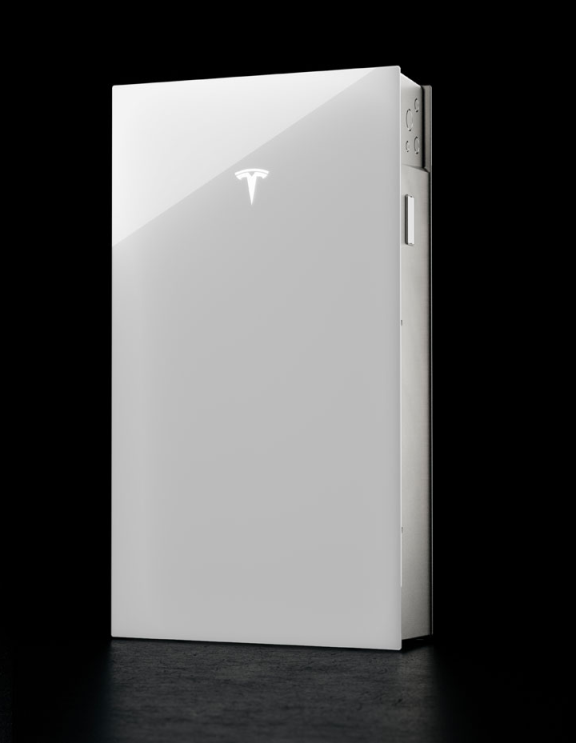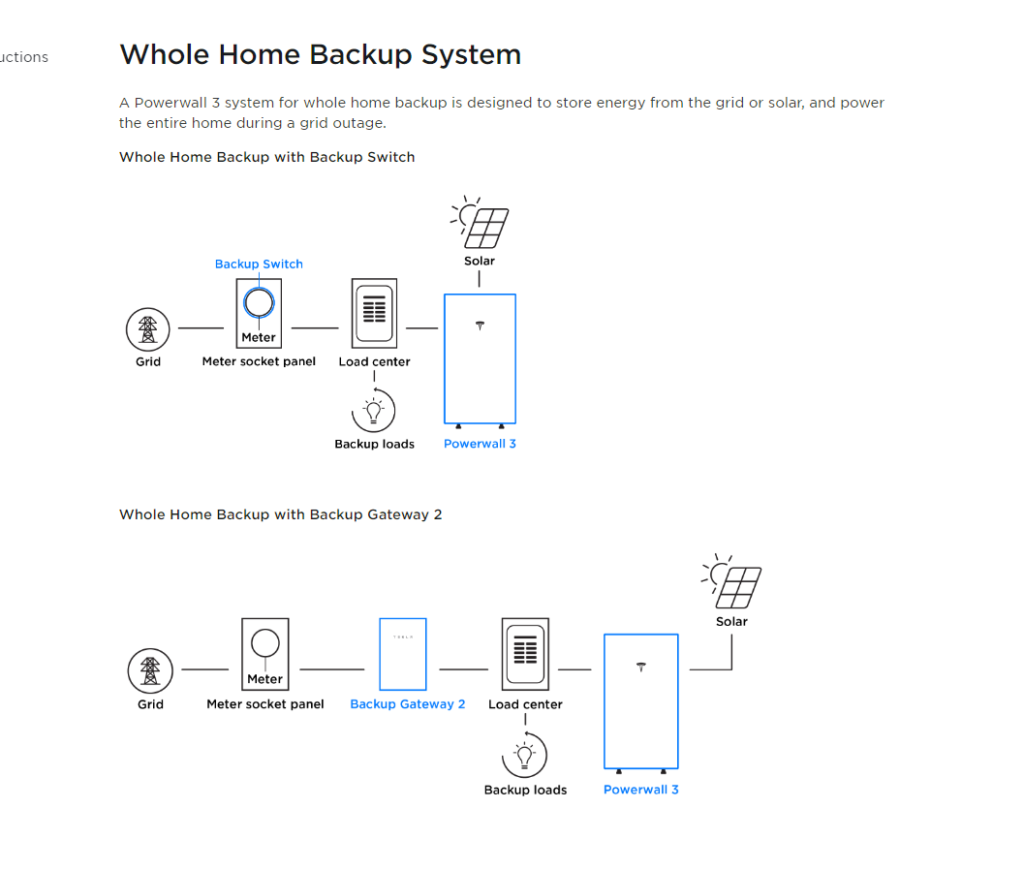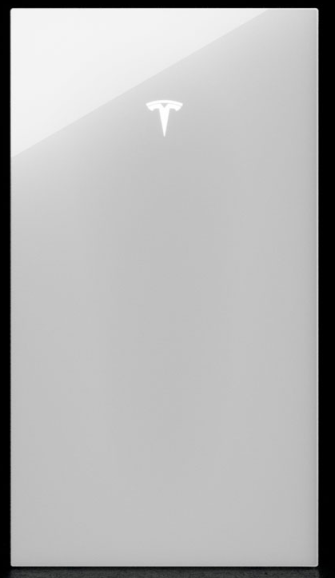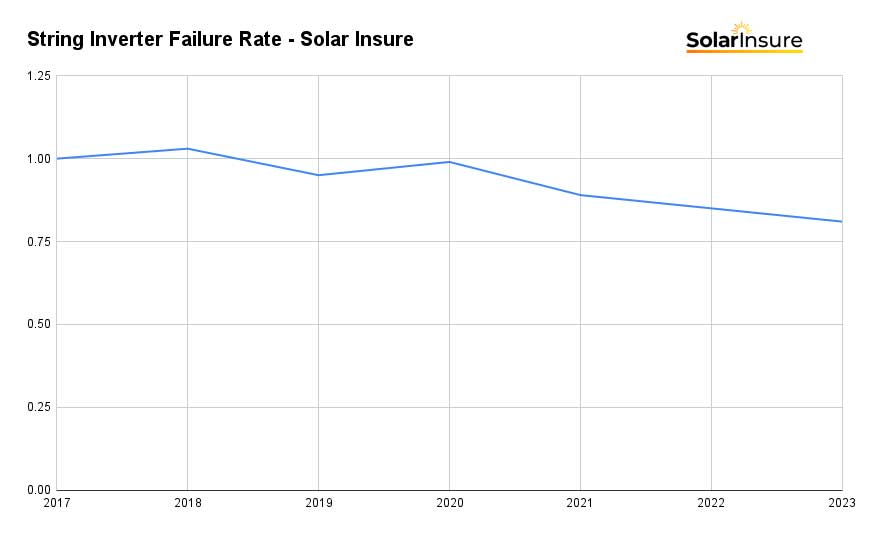
As the solar energy landscape evolves, so does the technology designed to optimize its use.
A standout in this innovation race is the newly released Tesla Powerwall 3, the latest iteration in Tesla’s esteemed line of home battery storage solutions.
Building on the success of its predecessors, the Powerwall 3 introduces several key improvements that underscore Tesla’s commitment to enhancing energy independence and sustainability for homeowners.
Table of Contents
Key Benefits of the Powerwall 3
Simpler, Streamlined Design:
The Powerwall 3 boasts a design overhaul that simplifies installation, making it faster and more straightforward for homeowners and installers.

Integrated Solar Inverter:
Eliminating the need for a separate inverter, the Powerwall 3 comes with an integrated hybrid inverter, streamlining the solar installation process and reducing overall system complexity.
Enhanced Energy Management:
Through the Tesla app, users gain access to advanced energy management and time-of-use software capabilities, allowing for more efficient use of stored solar energy.
Higher Power Output:
With an output of 11.5kW, up from the 5-7kW offered by previous models, the Powerwall 3 can support more high-load appliances, enhancing the system’s utility.
Modular and Scalable Architecture:
The architecture of the Powerwall 3 is designed to be modular and scalable, supporting up to four units on one system, making it adaptable to various energy needs.

Embedded Solar Architecture with 6 MPPTs:
A significant upgrade from a single MPPT in prior models, the new embedded solar architecture with 6 MPPTs allows for increased solar input and efficiency.
Lighter Weight:
Despite its enhanced capabilities, the Powerwall 3 is lighter overall, weighing 287 lbs, contributing to ease of installation.
Reliable Warranty:
Tesla continues to offer a robust 10-year warranty, promising a retained capacity of 70%, underscoring the product’s durability and long-term value.
Enhanced Reliability of Tesla Powerwall 3: A Closer Look at Performance Data
Impressive real-world performance data further underscore Tesla’s commitment to innovation and quality in its Powerwall series.

Based on monitoring over 10,000 Powerwall units, fewer than 500 have encountered issues requiring returns or warranty claims based on our internal data.
This translates to a remarkably low claim rate for a battery storage device, emphasizing the Powerwall’s reliability and durability in the field.
The Significance of Low Claim Rates
The low claim rate of less than 0.8% among our monitored Powerwalls is a testament to Tesla’s engineering and manufacturing prowess.

This rate is particularly noteworthy in the context of battery storage devices, which are subject to the rigorous demands of daily charging and discharging cycles. The Powerwall’s ability to withstand these conditions with minimal failure rates speaks to the product’s quality and the peace of mind it offers homeowners.
Investing in a Powerwall 3 means investing in a system designed for longevity and dependability, ensuring that your solar energy system delivers optimal performance with minimal interruption.
This reliability is crucial for homeowners looking to maximize their energy independence and minimize the hassle of maintenance and warranty claims.
Installation Time
The Tesla Powerwall 3 is known for its quick and efficient installation times. Several factors contribute to making the Tesla Powerwall 3 faster to install compared to previous models and other battery systems:
All-in-one design: By combining the battery, inverter, and other necessary components in a single unit, installers have fewer separate pieces to mount and connect.
Simplified wiring: The integrated design reduces the amount of wiring required between components, streamlining the installation process.
Backup switch: A new “Tesla backup switch” that attaches directly to the meter, making for an even simpler and quicker installation for whole-home backup functionality.
Support for multiple arrays: The Powerwall 3 can support up to three solar arrays (or up to six in some countries with more complex roof designs) without needing additional equipment, potentially reducing installation complexity for larger systems.
Designed with installer input: Tesla sought feedback from installers when designing the Powerwall 3, resulting in various user-friendly features that speed up the installation process.
Quicker commissioning: The unit is quicker to commission, as the setup and activation process has been streamlined.
Reduced risk of error: The integrated design and simplified installation process reduce the risk of installer error, which can speed up installation by minimizing the need for troubleshooting or corrections.
How long will the Tesla Powerwall 3 last?
Tesla is reported to use either LFP or Lithium Nickel Manganese Cobalt Oxide (LNMC) batteries in the Powerwall 3, which generally last between 10 to 15 years, depending on usage patterns, charge cycles, and maintenance.
Their lifespan is measured in charge cycles, with many LFP batteries maintaining a significant capacity after 4000 to 6000 cycles.
LFP batteries showcase remarkable endurance, with an estimated 80% capacity retention even after 4,000 cycles over ten years.
This impressive cycle life surpasses other lithium cell types, positioning LFP batteries as a superior choice for homeowners seeking a dependable energy storage solution.
Furthermore, their longevity extends to maintaining 50-60% capacity over 20 years, highlighting the minimal degradation and consistent performance LFP batteries offer.
Proper care, avoiding deep discharges, and optimal charging conditions can extend their service life.
Making an Informed Decision
For homeowners considering adding a Powerwall 3 to their solar energy setup, this performance data provides a solid foundation for expecting high reliability and satisfaction.
The proven track record of the Powerwall series, combined with the enhancements found in the Powerwall 3, makes it a compelling choice for those seeking to enhance their renewable energy systems with a robust storage solution.
Recommendation for Homeowners
Given Tesla’s robust reputation and the notable enhancements in the Powerwall 3, incorporating this home battery storage solution into your solar energy system could significantly benefit you.
Tesla’s commitment to quality and performance, with low warranty claims and high customer satisfaction, makes the Powerwall 3 an appealing option for those looking to maximize their solar investment.
Offering the Powerwall 3 to customers provides a cutting-edge energy storage solution and aligns with the growing trend toward sustainable and self-sufficient home energy systems.